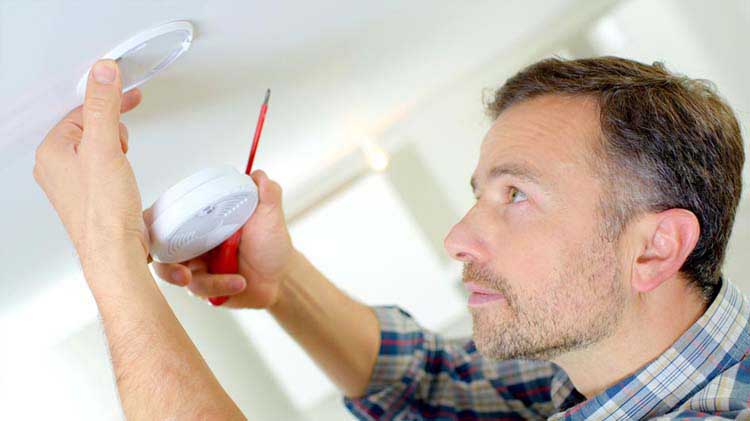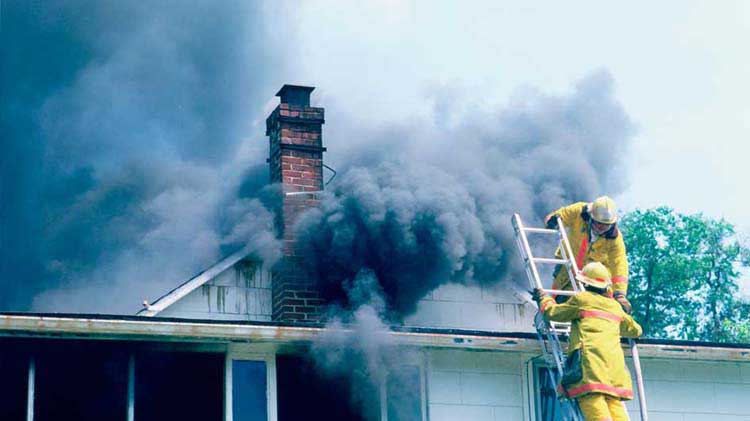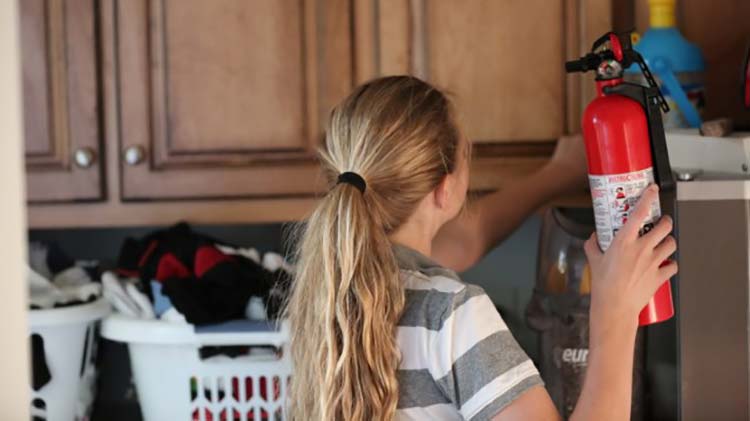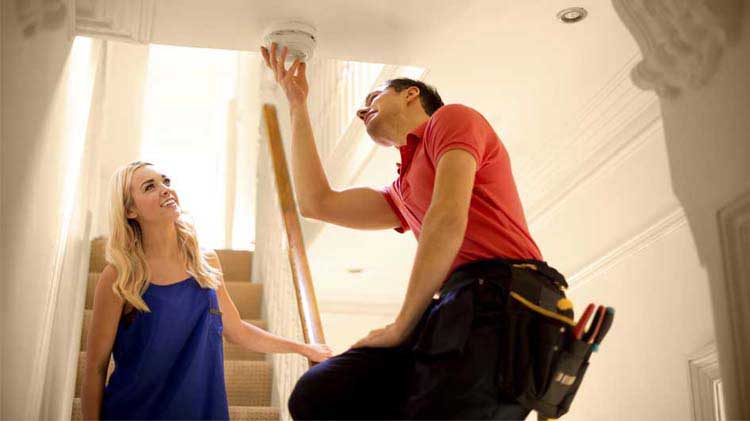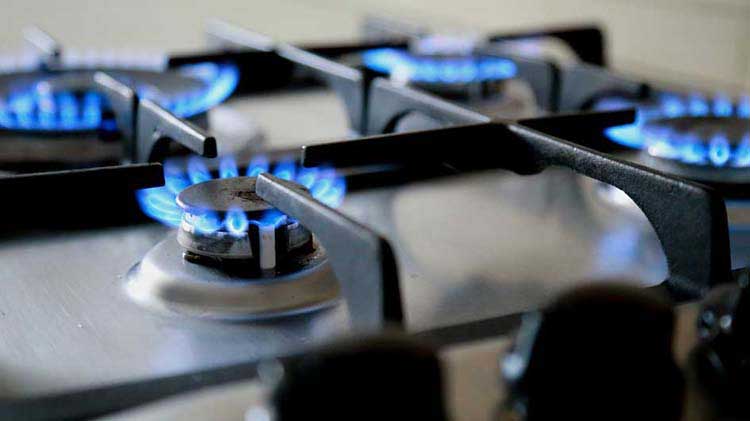Tips for home fire safety and prevention
Fires in your home can devastate your family and property alike. Increase your fire preparedness with these basic fire prevention tips.
Is your fire preparedness plan up to date? Home fires are dangerous and can result in devastating property damage and human loss. According to the latest research from the National Fire Protection Association, home structure fires caused 2,840 civilian deaths and about $8.6 million in property damage losses during 2021. It is important to prepare for the unexpected by planning and practicing steps to help protect your family in the event of a fire. Here is some home fire prevention information to consider.
Help protect your home with smoke alarms and carbon monoxide detectors
Fire alarm types and other information
- Battery-powered alarms may use a nine-volt battery or 10-year lithium battery.
- Hard-wired smoke alarms operate on the home's electrical system and include a battery backup in case of power failure.
- Combination smoke and carbon monoxide detectors may be a good choice for certain locations such as the garage, and near heat sources like furnaces, water heaters, dryers and fireplaces.
- For the hearing impaired, smoke alarms with a flashing light or vibrating pad are available.
- For the visually impaired, you can install an audible smoke alarm.
- Confirm your alarm is listed or approved by an independent testing laboratory, such as Underwriters Laboratories (UL).
- Follow manufacturers' recommendations on when to replace smoke alarms.
Tips for smoke detector installation
- To install a battery-powered alarm, all you need is a drill and screwdriver. Always follow the manufacturer's installation instructions.
- Hard-wired detectors should be installed by a qualified electrician and interconnected: If one alarm is activated, all alarms will sound.
- Install a smoke detector in each bedroom.
- Do not install a smoke alarm too close to windows, doors, vents or ceiling fans where drafts could blow smoke away from the detector.
- If you have questions about where to install your smoke detectors, contact your local fire department. Many departments will conduct home smoke detector inspections for free or a minimal fee.
When should I test the smoke and carbon monoxide detectors?
- If you have standalone battery-powered detectors, test them once a month and replace the batteries once a year.
- Confirm that everyone in your household knows the sound of the alarms.
- Never paint any part of a smoke detector.
- Follow the manufacturer's instructions when cleaning your detectors. Dust and debris can usually be removed by using a vacuum cleaner attachment.
Have a fire extinguisher handy
To operate a fire extinguisher, remember the word PASS: Pull the pin and release the locking mechanism. Aim the nozzle low and at the base of the fire. Squeeze the lever slowly and evenly. Sweep the nozzle from side to side.
- Select a multi-purpose Class ABC extinguisher that is large enough to put out a small fire, but not so heavy as to be difficult to handle.
- Read the included instructions and become familiar with its parts and operation before a fire breaks out. Local fire departments or fire equipment distributors often offer hands-on fire extinguisher training.
- Install fire extinguishers close to an exit.
- Keep your back to a clear exit when you use the device so you can make an easy escape if the fire cannot be controlled. If the room fills with smoke, leave immediately.
- Know when to go. Fire extinguishers are one element of a fire response plan, but the primary element is a safe escape.
- Remember that each extinguisher must be serviced annually and may need to be recharged.
- Have a fire extinguisher on every floor of your home.
Consider a home fire sprinkler system
- Residential fire sprinkler systems provide added protection above smoke alarms and fire extinguishers.
- Fire sprinklers respond to a fire — helping control the spread of deadly heat, flames and toxic smoke whether or not the occupants have appropriately responded to the signaling smoke alarm.
- These sprinklers are smaller than commercial or industrial sprinklers and can fit in with almost any decor.
- During home construction or remodeling, a fire sprinkler system can be cost effective.
Potential fire hazards at home
Just by being aware of common fire hazards and keeping an eye out for problems, you could help save your home and possessions from serious damage. Here are some to be aware of:
- Electrical cords - Look for any fraying or cracking of the cord. If you see any, replace the cord or appliance immediately. And remember to grasp the plug, not the cord, to avoid causing damage.
- Extension cords - Avoid using "octopus plugs", which allow many cords to be plugged into a single receptacle, and don't plug too many extension cords together.
- Light fixtures and switches - Replace buzzing or sparking switches and watch for panels that are hot to the touch. Have an electrician review the electrical system in your home as these may be signs the system needs to be rewired or updated.
- Light bulbs - Do not use light bulbs with a higher wattage rating than recommended on the fixture.
- Clothes dryer - Include cleaning the lint trap as part of your regular laundry routine. Left untouched, lint can build up in your dryer duct with every load of laundry. Have a professional inspect and clean your dryer at least once a year to help reduce a fire hazard.
- Glassware - When sunlight passes through some kinds of glassware, the concentrated ray can ignite flammable materials such as stacks of papers. Play it safe by moving all glass accessories, such as vases, away from windows.
- Loose batteries - Nine-volt batteries, which power smoke detectors, are designed with both posts on the top. Bits of metal, including other batteries and loose change, can create a bridge between the posts that causes a heat-creating charge. To help prevent this, keep unused batteries in their original packaging and cover the posts of expired batteries with black electrical tape before properly disposing of the batteries.
- Electric blankets - Keep your blanket flat while using it and confirm that it is certified by a national testing laboratory, such as UL.
- Appliances - Verify they are turned off after using and regularly check the wiring for signs of wear and tear.
- HVAC system - Check to see if the wiring is intact and ask yourself if the system has been serviced recently. If not, you may be due for a tune-up or cleaning.
- Fireplace - If you've recently used it, have the ashes cooled completely?
- Electronics - Look for devices, power bricks or chargers that could be overheating.
- Overloaded outlets - The National Fire Protection Association recommends plugging no more than one high-wattage appliance into an outlet at once.
- Garbage cans - Cigarette butts, greasy rags and other fire-prone items may have made their way in.
- Kitchen odds and ends - Leaving towels and gadgets too close to the stovetop may allow them to catch fire.
- Candles - Remember to blow them out before you leave the room, keep them away from curtains or upholstery and keep them out of the reach of pets and children.
Some communities offer a home fire inspection through their local fire department. They will inspect your home and recommend steps for improving fire safety. During the inspection, they typically review all fire hazards in your home, from testing smoke detectors to making sure curtains and other flammables are a safe distance from heat sources. Electrical factors they might inspect include:
- A proper ground - During a home fire inspection, the inspector should make sure your home is properly grounded. Grounding diverts excess current that may result from an electrical surge and helps to keep electrical systems, devices and humans safer.
- Electrical panel - There should be air space around the main panel, and the interior wiring in the panel should not be visible. Fuses should be the correct size for the circuit they protect. If you notice burn marks, hear buzzing or cracking, or smell burning plastic around or inside the electrical panel, have a qualified electrician check the panel immediately.
- Appliances - Inspectors may check the cords on electrical appliances since they could be the culprit in a home fire.
- Out-of-date equipment - A home fire inspector can suggest improvements to help reduce the risk of an electrical fire. One important update would be to install arc-fault circuit interrupters, which are designed to detect fire-starting arcs and shut down power.
- General safety concerns - The inspector may also look for electrical hazards such as receptacles and switches that aren't functioning properly, light bulbs exceeding the maximum wattage, damaged cords and overloaded power strips.
Monitor your home's electrical network
By plugging in a smart sensor, you can monitor your whole home's electrical network. These sensors help to identify potential electrical hazards and send you an alert. State Farm® is offering the Ting smart sensor, in limited quantities, to eligible State Farm non-tenant homeowner policyholders in participating states.
Additional fire safety tips
- Talk to your children about fire safety.
- Plan at least two ways to get out of any room.
- Agree on a meeting place outside where everyone can gather.
- Practice your fire safety plan yearly.
Now that you have learned about home fire hazards and prevention tips, you might be interested in common house fire causes or how to prevent fires during the holiday season. If your property sustains damage in a home fire, file a claim with a claims representative.
